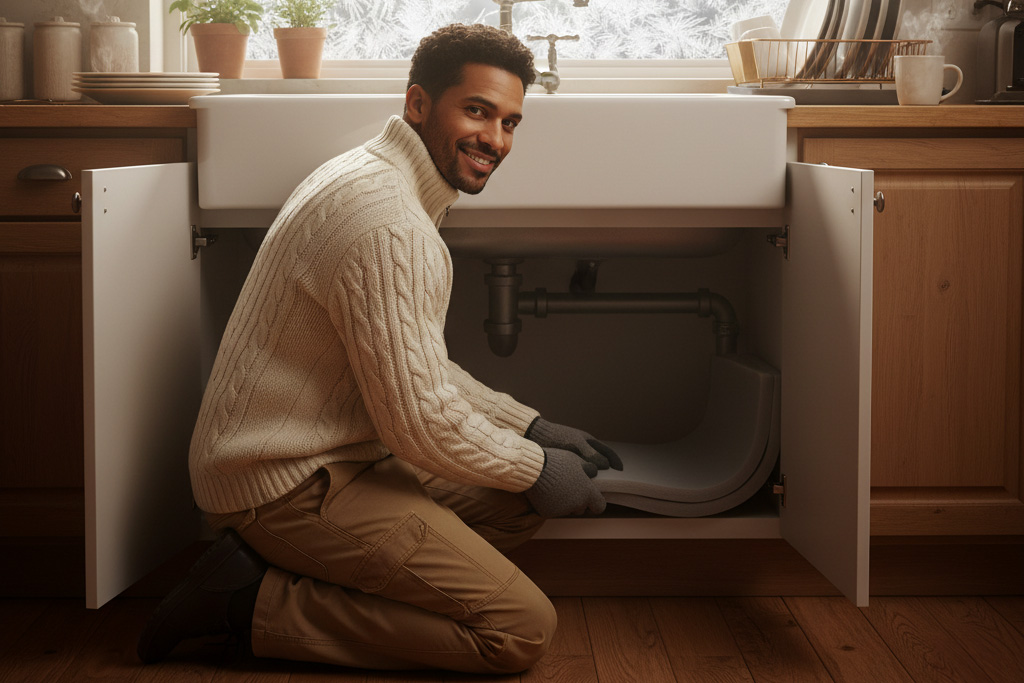As winter approaches, the dropping temperatures can pose serious risks to your home’s plumbing system. Frozen pipes are a common and costly problem, but with the right preparation, you can keep your pipes safe and your home running smoothly. At Regal Plumbing, Heating and A/C, we’re here to guide you through a comprehensive checklist for winterizing your pipes and share what to do if freezing occurs, ensuring your home stays warm and worry-free.

The Dangers of Frozen Pipes
When temperatures dip below freezing, the water inside your pipes can freeze, causing it to expand and potentially crack or burst the pipe. A burst pipe can lead to significant water damage, flooding your home and requiring expensive repairs. Even a small leak from a frozen pipe can waste gallons of water and cause mold growth if not addressed quickly. In areas where winter brings consistent cold snaps with temperatures below freezing, taking proactive steps to protect your plumbing is essential to avoid these costly and stressful issues.
Winterizing Your Pipes: A Comprehensive Checklist
Preventing frozen pipes starts with preparation. Follow this checklist to safeguard your plumbing system before the cold sets in.
Insulate Exposed Pipes
Pipes in unheated areas like basements, crawlspaces, or attics are especially vulnerable to freezing. Use foam pipe insulation or heat tape to wrap these pipes, providing a barrier against cold air. Pay special attention to pipes near exterior walls or in garages, where temperatures can drop significantly.
Open Cabinet Doors
Pipes under sinks, especially those along exterior walls, are at risk when temperatures plummet. Open cabinet doors to allow warm air from your home to circulate around these pipes, helping to keep them above freezing.
Seal Gaps and Cracks
Cold air can sneak into your home through gaps around windows, doors, or foundation walls, chilling nearby pipes. Inspect your home for drafts and seal them with caulk or weatherstripping to maintain a warmer environment for your plumbing.
Keep Your Home Warm
Maintain a consistent indoor temperature, ideally above 55°F, even when you’re away. This ensures that pipes in walls and unheated areas stay warm enough to prevent freezing, especially during prolonged cold spells.
Disconnect Outdoor Hoses
Before the first freeze, disconnect and drain garden hoses, and shut off outdoor water valves. Use an indoor valve to drain water from outdoor spigots, preventing freezing in these exposed areas.
What to Do If Your Pipes Freeze
Despite your best efforts, a pipe may still freeze. If you turn on a faucet and only a trickle or no water comes out, act quickly. First, keep the faucet open to allow melting ice to escape. Next, apply gentle heat to the pipe using a hairdryer or warm towels, starting from the faucet and working toward the frozen section. Never use an open flame, as this can damage pipes or start a fire. If you can’t thaw the pipe or suspect a burst, shut off your main water valve and call a professional plumber immediately.
Stay Prepared With Regal Plumbing, Heating and A/C
Don’t let winter catch you off guard. By following these steps, you can protect your pipes and avoid the headaches of frozen plumbing.
If you need assistance winterizing your home or handling a plumbing emergency, trust Regal Plumbing, Heating and A/C. Committed to Service, Committed to You, Since 1974—contact us today to keep your home safe and warm all winter long.
